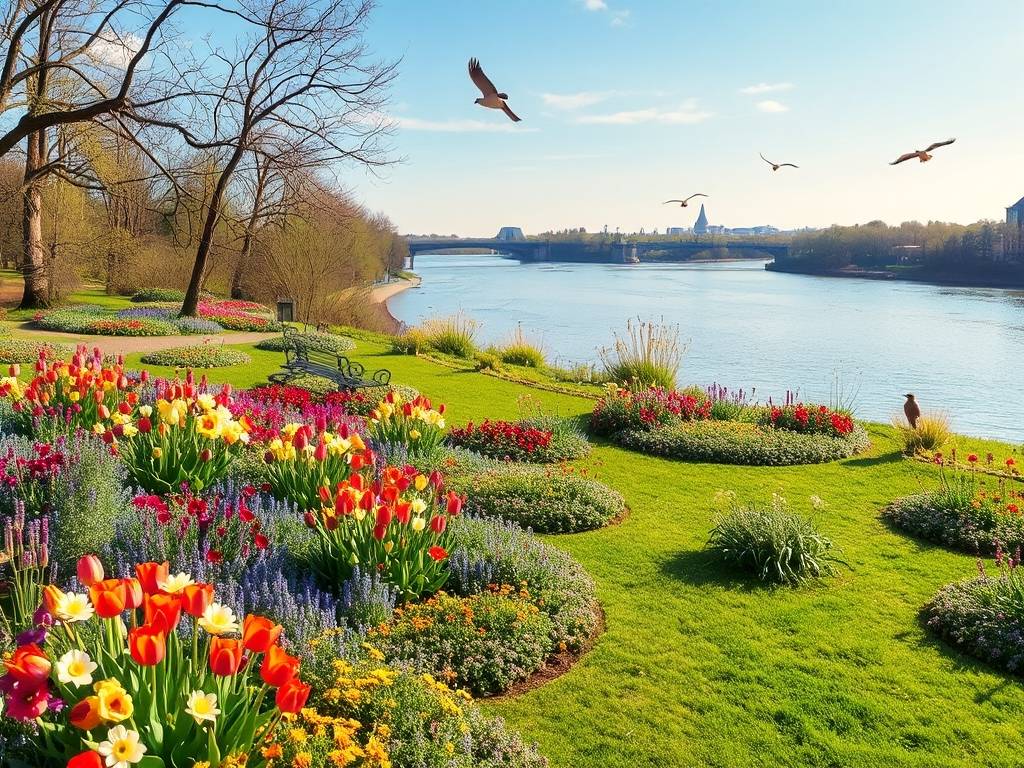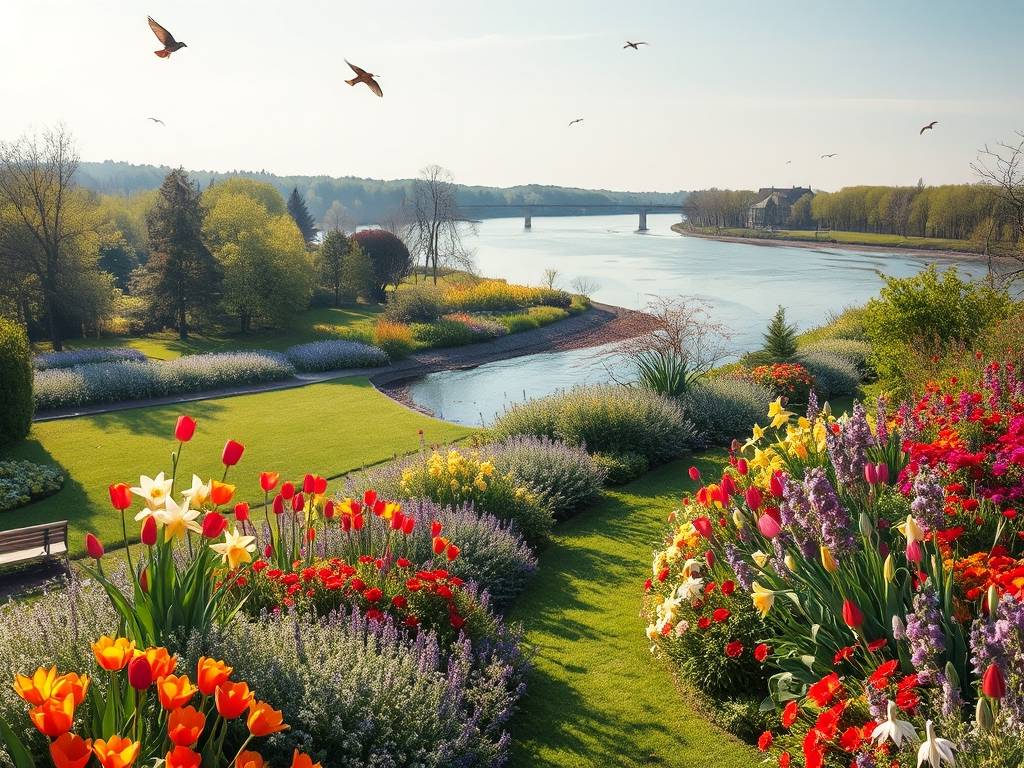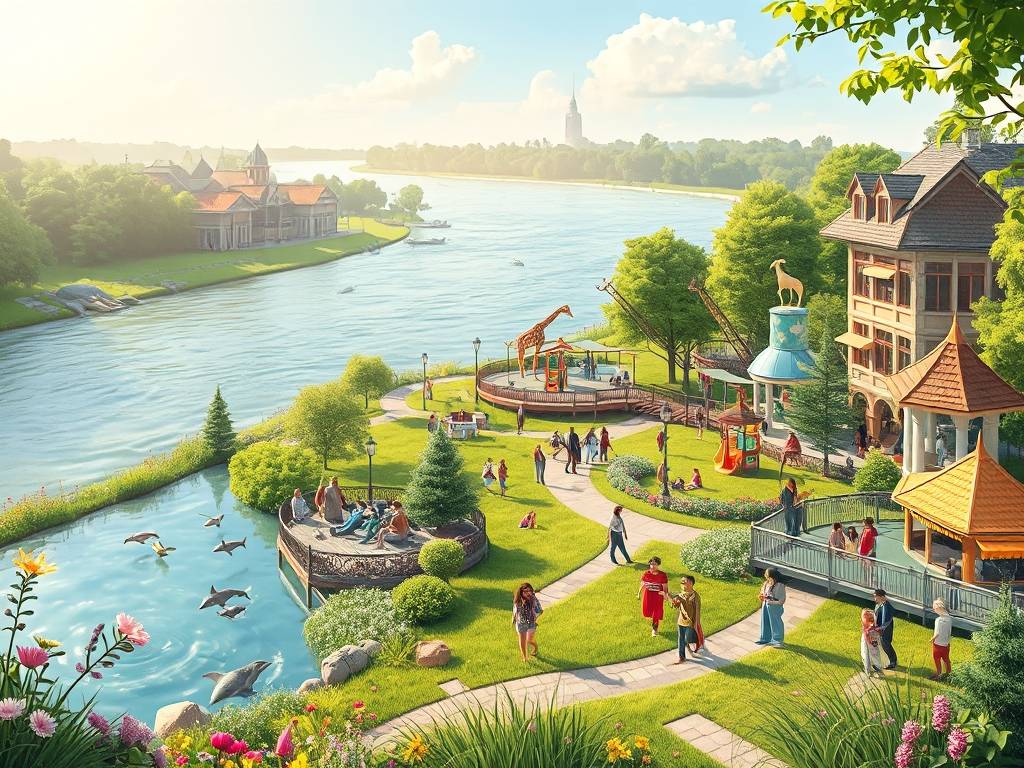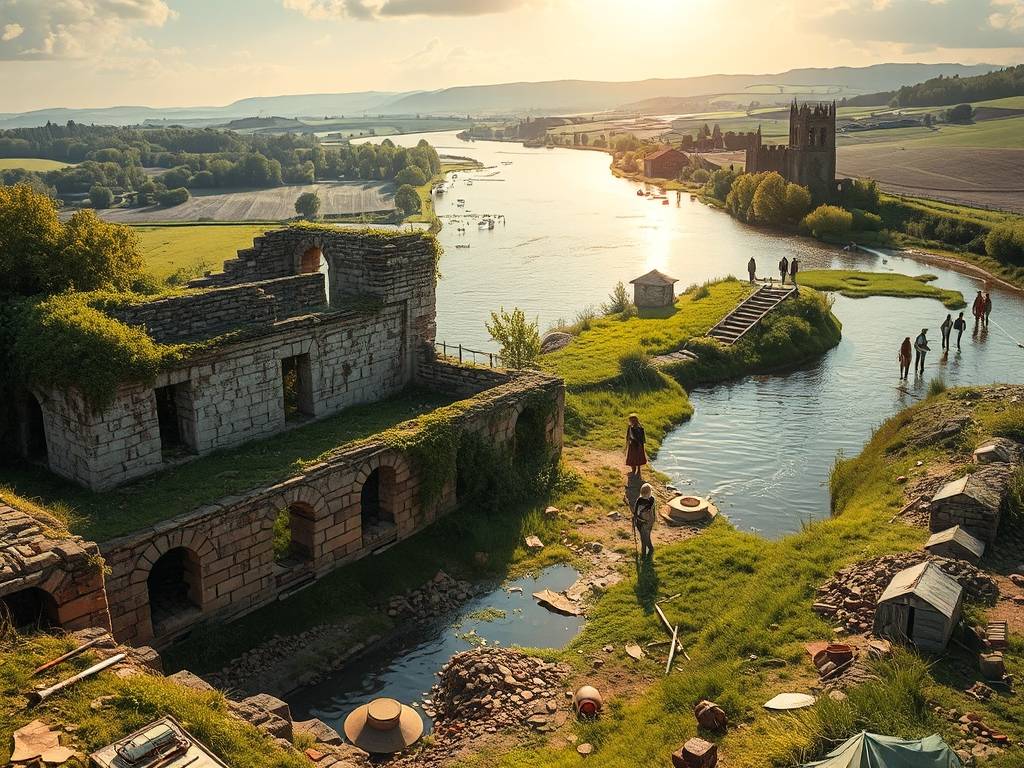Global Travel Information
Elbe River Botanical Gardens: Flowers & Plants Along the Banks
A Riverside Tapestry: Exploring the Floral Wonders of the Elbe River Botanical Gardens
Imagine a garden without fences, where the boundaries are drawn by the gentle flow of a river and the changing seasons. This is the unique magic of the Elbe River Botanical Gardens, a living, breathing collection of flora that stretches along the picturesque banks of one of Central Europe's most important waterways. Unlike a traditional, walled botanical garden, this is a decentralized haven, a series of curated landscapes that seamlessly blend into the natural river environment. It’s a place where horticultural artistry meets untamed nature, offering a continuously evolving spectacle for botanists, casual walkers, and anyone with a love for beauty.
The journey along the Elbe River's botanical trail is a lesson in ecological harmony. The gardens are not merely planted beside the river; they are intrinsically woven with it. The river provides the lifeblood—moisture, a unique microclimate, and nutrient-rich sediments deposited during seasonal floods. This symbiotic relationship creates a perfect environment for a diverse range of plant communities. As you stroll the paths, you move through distinct botanical zones, each telling a different story of adaptation and resilience. The riparian habitats of the Elbe River are the star of the show, showcasing plants that have specifically evolved to thrive in these dynamic conditions. From the elegant willows that dip their branches into the water to the vibrant bursts of color from hardy perennials, every element contributes to a thriving ecosystem.

One of the most enchanting sections is the area dedicated to native wildflowers of the Elbe Valley. Here, the air hums with the sound of bees and butterflies, drawn to the nectar-rich blooms. In spring, carpets of white wood anemones (Anemone nemorosa) and the cheerful yellow of primroses (Primula veris) create a delicate tapestry under the still-bare trees. As summer takes hold, the palette intensifies. You'll find the striking purple spikes of meadow sage (Salvia pratensis) and the bright, daisy-like flowers of oxeye daisies (Leucanthemum vulgare) dancing in the breeze. These are not just pretty faces; they are the foundation of the local food web, supporting countless insect species and, in turn, the birds and small mammals that call the riverbank home. This careful cultivation of native species is crucial for sustainable riverbank landscaping, promoting biodiversity and ensuring the health of the river corridor without the need for excessive intervention.
Venturing closer to the water's edge, the character of the flora changes. This is the realm of reeds, rushes, and moisture-loving plants. Tall, swaying stands of common reed (Phragmites australis) form dense thickets, their roots filtering the water and stabilizing the soft, muddy banks. Among them, the bright yellow flags of yellow iris (Iris pseudacorus) stand like sentinels. The subtle beauty of plants like meadowsweet (Filipendula ulmaria) with its frothy, cream-colored flowers and almond-like scent, adds a layer of soft texture and fragrance. These riverside perennials for damp soil are masterclasses in engineering, possessing specialized root systems that can withstand periods of submergence and oxygen-poor conditions. Observing these plants offers a profound understanding of how life adapts to challenging environments, a key principle in modern ecological garden design principles.
Beyond the wild and native plantings, the gardens also feature more formal collections that highlight the horticultural potential of the riverbank. Carefully designed borders showcase a stunning array of flowering plants for riverbank beauty that thrive in the moist, fertile soil. You might encounter majestic stands of gunnera (Gunnera manicata), with leaves so large they look like something from a prehistoric jungle, providing dramatic structural interest. Ornamental grasses, such as miscanthus and calamagrostis, catch the light and rustle softly, adding movement and sound to the landscape. Daylilies (Hemerocallis), hostas, and astilbes provide long-lasting color and texture, proving that a garden in a damp location can be as vibrant and lush as any well-tended traditional border. These displays are inspirational for anyone looking to create their own beautiful, low-maintenance garden in a similar setting.
The trees along the Elbe River Botanical Gardens are the silent giants that frame the entire experience. They provide shade, structure, and a vertical dimension to the landscape. The most iconic are the willows, particularly the white willow (Salix alba), with its slender, silvery leaves that seem to weep into the river. These trees are vital for riverbank erosion control with plants, their extensive, fibrous root systems acting as a natural net that holds the soil firmly in place, preventing it from being washed away by the current. Beyond the willows, you find stately oaks, graceful alders, and elegant poplars, each contributing to a complex canopy that supports a world of life, from nesting birds to mosses and lichens. The botanical diversity along the Elbe is perhaps most evident in this vertical layering, from the mossy ground cover to the high canopy.
A visit to the Elbe River Botanical Gardens is more than a simple walk; it's a seasonal pilgrimage. Each visit reveals a new face of the garden. Spring is a time of awakening, with bulbs pushing through the earth and a sense of fresh, vibrant green everywhere. Summer is a celebration of abundance, with flowers in full bloom and the landscape teeming with life. Autumn transforms the gardens into a fiery spectacle of gold, amber, and crimson, as the deciduous trees put on their final, spectacular show. Even winter has its own stark beauty, when the architectural forms of trees and seed heads are outlined against frost and the quiet river, offering a different kind of peace. This ever-changing nature makes it a destination worth returning to again and again.

Ultimately, the Elbe River Botanical Gardens serve as a powerful living laboratory and a sanctuary for the soul. They demonstrate how we can cultivate beauty while respecting and enhancing natural processes. They show us the importance of preserving Elbe River's botanical heritage and the critical role plants play in maintaining healthy river systems. Whether you are a dedicated gardener seeking ideas for plants for damp riverbank conditions, a nature lover eager to spot local wildlife, or simply someone in search of a tranquil escape, these gardens offer a rich and rewarding experience. They remind us that some of the most beautiful gardens are not created by walls, but by water, wind, and the enduring power of nature itself, inviting us to walk slowly, observe closely, and reconnect with the timeless rhythm of the river.
相关文章
- Elbe River Film Locations: Movies Shot Along the River
- Elbe River Historical Markers: Learn About Local History
- Elbe River Archaeological Sites: Ancient Finds Near the Water
- Elbe River Zoos & Aquariums: Family Fun Near the River
- Elbe River Amusement Parks: Rides with River Views
- Elbe River Camping Spots: Pitch a Tent by the Water
- Elbe River Glamping Sites: Luxury Camping Along the Banks
- Elbe River RV Parks: Stay in Your Camper Near the River
- Elbe River B&Bs: Cozy Accommodations with a Personal Touch
- Elbe River Hostels: Budget Stays for Young Travelers
发表评论
评论列表
- 这篇文章还没有收到评论,赶紧来抢沙发吧~


